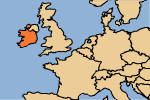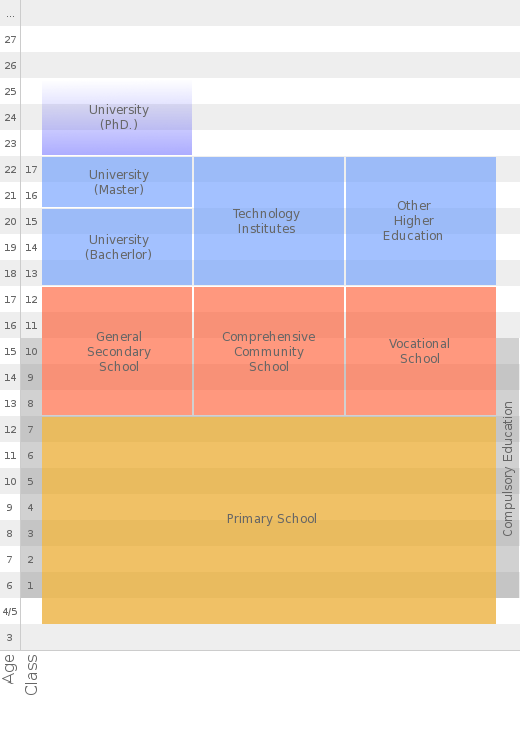url: http://edufile.info/?view=school_systems&topic=topic_general_infos&country=17&add_tag=-47
School systems Ireland
| Kindergartens | Primary schools | Secondary schools | Higher education
Country


Ireland is an island situated North West of continental Europe. The island covers an area of 81,638 km² and its population compromises of 6.1 million people. The official languages are Irish and English.
Overview

Education becomes compulsory when a pupil turns four until he or she has reached the age of sixteen. Home schooling is legal in certain cases although quite rare. Schools are generally free of charge.
Kindergartens
Kindergartens are not provided by the state and are run as private businesses. Attendance is therefore not compulsory.
Primary schools
There are roughly 3300 schools. Almost all of these schools are catholic. The size of school classes is not regulated, about 30 students is average.
An average day in primary school typically starts at 9:00 in the morning and ends around 3:00. The country does not oblige children to take any leaving exams during the last year of primary school. Furthermore, the majority of primary schools have a computer available in every class room. Most schools make use of school uniforms. No school meals are supplied. Electives in primary school are not common practice. Extra-curricular activities vary from school to school and depend on the willingness of parents to contribute.
Secondary schools
There are roughly 700 schools. 250 are vocational, 100 are comprehensive community and 350 are general secondary level schools. Most schools are Catholic. Students can choose their own school.
Apart from Irish, English and Maths all subjects are electives. Counselling is available in all schools. Entrance exams are only held to determine the level of students entering; results have no consequences in terms of acceptance. A leaving exam is held in order to determine eligibility for further studies. Furthermore, all students have access to computers. Most schools have uniforms. School meals are not provided. Extracurricular activities are sometimes organised, depending on the willingness of the staff and parents.
Higher education
[missing data]
Disabled students
Students with physical disabilities are catered for in all schools throughout the country. Most schools provide resource facilities for students with learning difficulties. Several schools have special units for student with severe mental disabilities. There are also specific schools that cater for the needs of these students.
Developments
A recent development was the change in the exam timetable for Leaving Certificate students. From this year on students will not sit their two written papers on the same day. Exams will be divided so that seriously academic subjects will be followed by more practical exams. The service to students with learning and mental difficulties is controversial at present and more facilities for these students are currently being developed.


